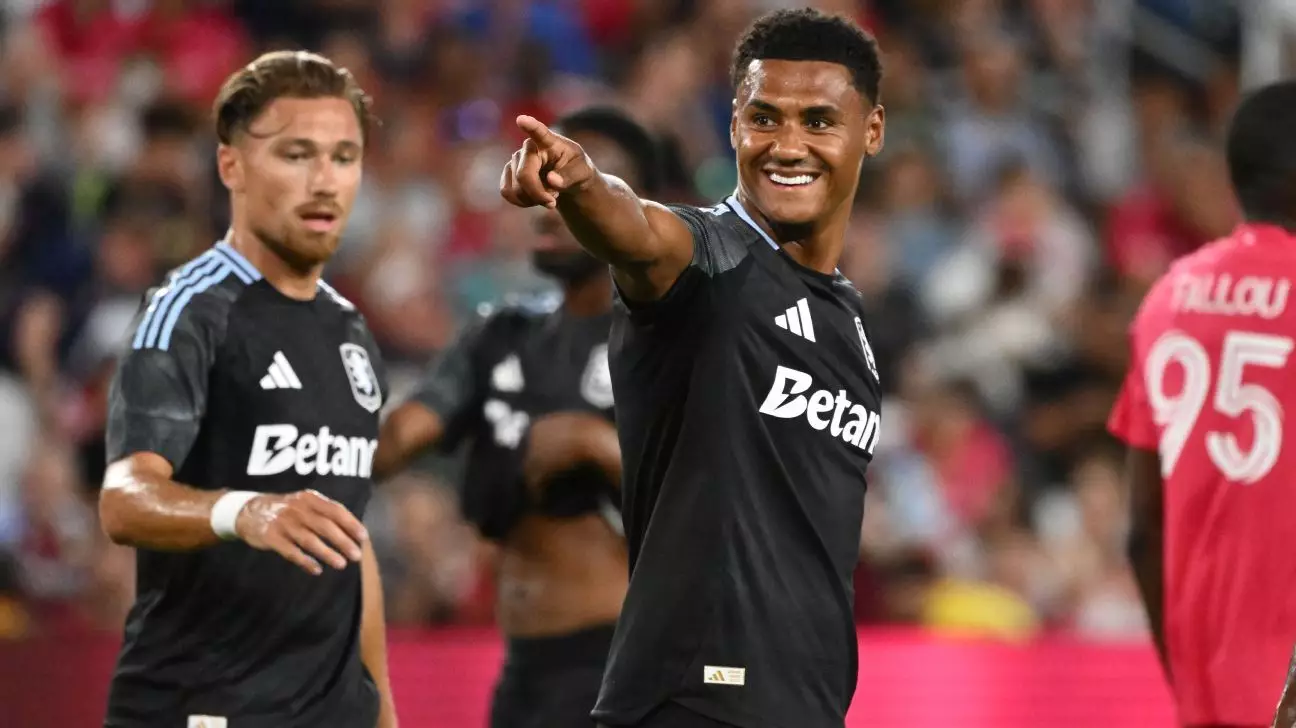Manchester United’s transfer strategy this summer reveals both ambition and a degree of prudence. Targeting Aston Villa’s Ollie Watkins signifies a clear intent to bolster the front line with an established Premier League scorer. Watkins, a seasoned 29-year-old, appears eager to embrace a new challenge, hinting at a professional maturity that could benefit United’s attacking structure. The reported £40-50 million valuation suggests a significant, yet reasonable, investment considering his proven goal-scoring record.
However, United’s broader approach raises questions about their long-term planning. Is Watkins a strategic upgrade or merely a stopgap? The pursuit of alternative targets like Samu Aghehowa and Vangelis Pavlidis indicates a readiness to pivot, reflecting a degree of uncertainty about the ideal signing. This lack of decisiveness could prove costly if United fail to land Sesko, the initial primary target. Relying on a fallback plan in football transfers can be both a safety net and a sign of tactical indecisiveness, potentially disrupting team cohesion if players arrive under pressure or without the integration time needed.
Moreover, United’s focus on value for money, with negotiations possibly bringing Watkins within reach, signals a pragmatic execution of transfer policy. Yet, given the competitive landscape and the demanding expectations at Old Trafford, the true test will be whether these signings transform United into title contenders or merely serve as band-aids for their attacking deficiencies.
Arsenal and Crystal Palace: A Study in Negotiation Dynamics and Market Realities
Arsenal’s apparent retreat from Eberechi Eze illuminates the complex interplay of valuation and club negotiations in modern football. Eze’s £68 million release clause represents a substantial financial hurdle, one that Arsenal seem unwilling—or perhaps unable—to meet. Palace’s stance, insisting on the clause’s activation as the only route out, underscores their desire to maximize returns, especially for a player who contributed impressively last season.
This impasse highlights a strategic calculus: Is investing heavily in Eze justified given Arsenal’s current squad needs, or does it expose the club’s limits in the transfer market? Mikel Arteta’s potential shift towards alternative targets reveals a level of adaptability, but also hints at possible missed opportunities if Palace holds firm. The risk here is that a prolonged stalemate might destabilize Eze’s focus or lead to a less optimal transfer—either a lower fee or a less suitable alternative.
From a broader perspective, this scenario exemplifies how clubs with differing valuations navigate the transfer market’s high-stakes negotiations. For Arsenal, the key is balancing financial prudence with the necessity of bolstering their attacking options—something that, if mishandled, could hinder their Premier League ambitions.
Europa’s Market Moves: The Persistent Quest for Value and Fit
Across the continent, clubs like Juventus, Atlético Madrid, and Porto showcase the globalized nature of modern football transfers—where strategic fit, financial considerations, and future potential collide. Juventus’s approach of offloading Dusan Vlahovic as a backup option indicates a pragmatic stance: acquiring high-quality talent without overstretching the budget. Their pursuit of Newcastle’s Sandro Tonali highlights their desire to strengthen midfield, emphasizing the importance of a balanced squad capable of competing domestically and in Europe.
Atlético Madrid’s interest in Napoli’s Giacomo Raspadori reveals their ongoing search for creative depth and attacking versatility. Given the stiff competition and the fact that the club missed out on other targets, their improved negotiations signals a clear intent to secure a player capable of fitting into their tactical system. Their broader strategy appears to be a measured balance between cost and quality, aware of the necessity to adapt and evolve their squad without reckless spending.
Meanwhile, Porto’s aggressive pursuit of Jakub Kiwior illustrates the ambitious nature of smaller clubs in the European hierarchy—seeking underrated or undervalued talents that can develop into future stars. Such moves underscore the importance of scouting and patience, with successful investments potentially yielding long-term dividends for their financial sustainability.
Emerging Stars and the Unpredictable Nature of Transfers
The arrival of young prospects like Will Lankshear at Oxford United and ongoing trials of players like Facundo Buonanotte underpin the ever-present hope for clubs to unearth hidden gems. These signings highlight a smarter, data-driven approach where potential outweighs immediate fame. For clubs operating outside the elite tier, such investments represent both a chance at breakthrough success and a risk of unfulfilled expectations.
Notably, high-profile moves like Luka Jovic’s transfer to AEK Athens from Real Madrid exemplify the shifting trajectories of careers in modern football. Once a highly-touted talent, Jovic’s free transfer indicates how the market continually redistributes talent—offering players new opportunities at different levels of competition. These moves demonstrate the importance of adaptability and strategic planning for clubs and players alike.
Finally, the looming pursuit of Randal Kolo Muani by Tottenham and Sporting CP’s active transfer negotiations reflect the relentless pursuit of attacking reinforcements—showing that even in a market saturated with options, clubs are willing to take calculated risks to fill key gaps. This vibrant activity underscores the importance of judicious decision-making amidst a sea of opportunities, where each signing can either be a masterstroke or a costly miscalculation.

